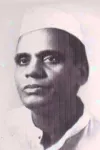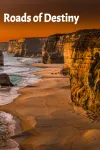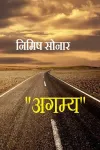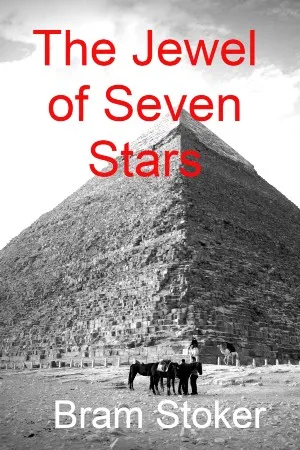CHAPTER V.A HOTTENTOT VILLAGE.[edit]
The voyage along the upper course of the river was soon
accomplished, and although the weather soon became rainy,
the passengers, comfortably installed in the ship's cabin,
suffered no inconvenience from the torrents of rain which
usually fall at that season. The “Queen and Czar” shot
along rapidly, for there were neither rapids nor shallows,
and the current was not sufficiently strong to retard her
progress.
Every aspect of the river-banks was enchanting;
forest followed upon forest, and quite a world of birds dwell
among the leafy branches. Here and there were groups of
trees belonging to the family of the “proteaceæ,” and
especially the “wagenboom” with its reddish marbled-wood
forming a curious contrast with its deep blue leaves and
large pale yellow flowers: then there were the “zwartebasts”
with their black bark, and the “karrees” with dark
evergreen foliage. The banks were shaded every where by
weeping willows, while the underwood extended beyond
for several miles. Every now and then vast open tracks
presented themselves unexpectedly, large plains, covered
with innumerable colocynths, mingled with “sugar-bushes,”
out of which flew clouds of sweet-singing little birds, called
“suiker-vogels” by the Cape colonists.
The winged world
offered many varieties, all of which were pointed out to Sir
John Murray by the bushman. Sir John was a great lover
of game, both hairy and feathered, and thus a sort of intimacy
arose between him and Mokoum, to whom, according
to Colonel Everest's promise, he had given an excellent long-range
rifle, made on the Pauly system. It would be useless
to attempt a description of the bushman's delight when he
found himself in possession of such a splendid weapon.
The two hunters understood each other well, for though so
learned, Sir John Murray passed for one of the most
brilliant fox-hunters in old Caledonia, and he listened to
the bushman's stories with an interest amounting to envy.
His eyes sparkled when Mokoum showed him the wild
ruminants in the woods; here a herd of fifteen to twenty
giraffes; there, buffaloes six feet high, with towering black
horns: farther on, fierce gnus with horses' tails; and again,
herds of “caamas,” a large kind of deer, with bright eyes,
and horns forming a threatening-looking triangle; and
every where, in the dense forests as well as in the open
plains, the innumerable varieties of antelopes which abound
in Southern Africa; the spurious chamois, the gems-bok,
the gazelle, the duiker-bok, and the spring-bok. Was not
all this something to tempt a hunter, and could the fox-hunts
of the Scottish lowlands vie with the exploits of a
Gumming, an Anderson, or a Baldwin?
It must be confessed
that Sir John Murray's companions were less excited
than himself at these magnificent specimens of wild game.
William Emery was watching his colleagues attentively,
and trying to discover their character under their cold
exterior. Colonel Everest and Matthew Strux, men of
about the same age, were equally cold, reserved, and
formal; they always spoke with a measured slowness, and
from morning to night it seemed as if they had never met
before. That any intimacy should ever be established between
two such important personages was a thing not to be
hoped for; two icebergs, placed side by side would join in
time, but two scientific men, each holding a high position,
never.
Nicholas Palander, a man of about fifty-five years of age,
was one of those who have never been young, and who will
never be old. The astronomer of Helsingfors, constantly
absorbed in his calculations, might be a very admirably
constructed machine, but still he was nothing but a machine,
a kind of abacus, or universal reckoner. He was the calculator
of the Anglo-Russian Commission, and one of those
prodigies who work out multiplications to five figures in
their head, like a fifty-year-old Mondeux.
Michael Zorn more nearly resembled William Emery in
age, enthusiasm, and good humour. His amiable qualities
did not prevent his being an astronomer of great merit,
having attained an early celebrity. The discoveries made
by him at the Kiew Observatory concerning the nebula of
Andromeda had attracted attention in scientific Europe,
and yet with this undoubted merit he had a great deal of
modesty, and was always in the background.
William
Emery and Michael Zorn were becoming great friends,
united by the same tastes and aspirations; and most
generally they were talking together, while Colonel Everest
and Matthew Strux were coldly watching each other, and
Palander was mentally extracting cube roots without
noticing the lovely scenes on the banks, and Sir John
Murray and the bushman were forming plans for hunting
down whole hecatombs of victims.
No incident marked the voyage along the upper course
of the Orange. Sometimes the granite cliffs which shut in
the winding bed of the river seemed to forbid further progress,
and often the wooded islands which dotted the current
seemed to render the route uncertain; but the bushman
never hesitated, and the “Queen and Czar” always
chose the right route, and passed round the cliffs without
hindrance. The helmsman never had to repent of having
followed Mokoum's directions.
In four days the steamboat had passed over the 240 miles
between the cataract of Morgheda and the Kuruman, an
affluent which flowed exactly past the town of Lattakoo,
whither Colonel Everest's expedition was bound. About
thirty leagues above the falls the river bends from its
general direction, which is east and west, and flows southeast
as far as the acute angle which the territory of Cape
Colony makes in the north, and then turning to the northeast,
it loses itself in the wooded country of the Transvaal
Republic.
It was early in the morning of the 5th of
February, in a driving rain, that the “Queen and Czar”
arrived at Klaarwater, a Hottentot village, close to the
meeting of the Orange and Kuruman. Colonel Everest,
unwilling to lose a moment, passed quickly by the few
Bochjesmen cabins that form the village, and under the
pressure of her screw, the vessel began to ascend the
affluent. The rapid current was to be attributed, as the
passengers remarked, to a peculiarity in the river, for the
Kuruman being wide at its source, was lessened as it
descended by the influence of the sun's rays; but at this
season, swollen by the rains, and further increased by the
waters of a sub-affluent, the Moschona, it became very
deep and rapid. The fires were therefore made up, and the
vessel ascended the Kuruman at the rate of three miles an
hour.
During the voyage the bushman pointed out a good
many hippopotami in the water; but these great pachyderms,
clumsy, thickset beasts, from eight to ten feet long,
which the Dutch at the Cape call “sea-cows,” were by no
means of an aggressive nature, and the hissing of the steam
and the panting of the screw quite frightened them, the
boat appearing to them like some great monster which
they ought to distrust, and in fact, the arsenal on board
would have rendered approach very difficult. Sir John
Murray would have very much liked to try his explosive
bullets on the fleshy masses, but the bushman assured him
that there would be no lack of hippopotami in the more
northerly rivers, so he determined to wait for a more favourable
opportunity.
The 150 miles which separated the mouth of the Kuruman
from the station of Lattakoo were traversed in fifty
hours, and on the 7th of February the travellers had reached
the end of their journey.
As soon as the steamboat was
moored to the bank which served as a quay, a man of fifty
years of age, with a grave air but kind countenance, stepped
on board, and offered his hand to William Emery, The
astronomer introduced the new-comer to his travelling
companions, as—
“The Rev. Thomas Dale, of the London Missionary
Society, Governor of the station of Lattakoo.”
The Europeans bowed to Mr. Dale, who gave them
welcome, and put himself at their service.
The town of Lattakoo, or rather the village of that name
is the most northerly of the Cape Missionary stations, and
is divided into Old and New. The first, which the “Queen
and Czar” now reached, had 12,000 inhabitants at the
beginning of the century, but they have since emigrated to
the north-east, and the town, now fallen into decay, has
been replaced by New Lattakoo, which is built close by, on
a plain which was formerly covered with acacias, and
thither Mr. Dale conducted the Europeans. It consisted
of about forty groups of houses, and contained 5000 or
6000 inhabitants of the tribe of the Bechuanas.
Dr. Livingstone
stayed in this town for three months before his first
voyage up the Zambesi in 1840, previously to crossing the
whole of Central Africa, from the bay of Loanda to the
port of Kilmana on the coast of Mozambique.
When they reached New Lattakoo, Colonel Everest
presented a letter from Dr. Livingstone, which commended
the Anglo-Russian Commission to his friends in South
Africa. Mr. Dale read it with much pleasure, and returned
it to the Colonel, saying that he might find it useful on his
journey, as the name of David Livingstone was known and
honoured throughout that part of Africa.
The members of the Commission were lodged in the
missionary establishment, a large house built on an eminence
and surrounded by an impenetrable hedge like a fortification.
The Europeans could be more comfortably lodged
here than with the Bechuanas; not that their dwellings
were not kept properly in order; on the contrary, the
smooth clay floors did not show a particle of dust,
and the long-thatched roofs were quite rain-proof; but
at best, their houses were little better than huts with
a round hole for a door, hardly large enough to admit
a man; moreover, they all lived in common, and close
contact with the Bechuanas would scarcely have been
agreeable.
The chief of the tribe, one Moulibahan, lived at Lattakoo,
and thought it right to come and pay his respects to the
Europeans. He was rather a fine man, without the thick
lips and flat nose of the negro, with a round face not so
shrunken in its lower part as that of the other Hottentots.
He was dressed in a cloak of skins, sewn together with
considerable art, and an apron called a “pujoke.” He wore
a leather skull-cap, and sandals of ox-hide: ivory rings
were wound round his arms, and from his ears hung brass
plates about four inches long—a kind of ear-ring—which is
also a charm; an antelope's tail stood up in his skull-cap,
and his hunting-stick was surmounted by a tuft of small
black ostrich feathers. The natural colour of his body was
quite invisible through the thick coating of ochre with
which he was besmeared from head to foot, while some
ineffaceable incisions in his legs denoted the number of
enemies he had slain.
The chief, as grave as Matthew Strux himself, stepped
up to the Europeans, and took them in turn by the nose.
The Russians permitted this to be done quite gravely, the
English rather more reluctantly, but still it had to be done,
for according to African custom, it denoted a solemn
engagement to fulfil the duties of hospitality to the Europeans.
When the ceremony was over, Moulibahan retired
without having uttered a word.
“And now that we are naturalized Bechuanas,” said
Colonel Everest, “let us begin our operations without
losing a day or an hour.”
And indeed no time was lost; still, such is the variety of
detail required in the organization of an expedition of this
character, the Commission was not ready to start until
the beginning of March. That, however, was the time
appointed by Colonel Everest; because then the rainy
season just being over, the water, preserved in the fissures
of the earth, would furnish a valuable resource to travellers
in the desert.
On the 2nd of March, then, the whole caravan, under
Mokoum's command, was ready. The Europeans took
farewell of the missionaries at Lattakoo, and left the village
at seven o'clock in the morning.
“Where are we going, Colonel?” asked William Emery,
as the caravan passed the last house in the town.
“Straight on, Mr. Emery,” answered the Colonel, “until
we reach a suitable place for establishing a base.”
At eight o'clock the caravan had passed over the low
shrubby hills which skirt the town, and soon the desert,
with its dangers, fatigues, and risks, lay unfolded before the
travellers.








